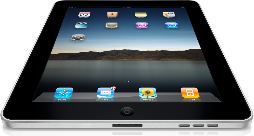
Apple held a news conference today to announce several enhancements to the iPhone operating system. This fourth generation of the OS will include:
Multitasking: One of the biggest gripes about the iPhone is that it only allows access to one application at a time. Now if developers integrate the new APIs several applications run at once. In addition if you’re using an application like AOL Radio or Shoutcast you can start using another app and the music will continue streaming. The same can be done for location. Instead of shutting down Mapquest and losing navigation, the iPhone can continue accessing location and providing turn-by-turn directions. Finally VOIP applications like Skype can also function in the background so calls can be received even if Skype isn’t running.
Another feature related to multitasking that was discussed during this segment was “push notification” and “local notification.” In lieu of multitasking Apple had devised a system in which an application could send a user a SMS-type alert even when the application wasn’t running. This was useful in apps like AIM where messaging was occurring in real time but it wasn’t practical to keep AIM running all the time. Now rather than relying on Apple’s servers for this feature, notifications can be run off of developers’ own servers.
Multitasking will be available for the iPhone 3GS and the third generation touch but not for second generation devices. (If you are a first gen user doesn't look like Apple is even targeting these handsets anymore).
Game Center: Here Apple is taking direct aim at Nintendo and Sony. There are more than 50,000 games available for the iPhone (out of 180K apps total). Apple is upping its support of gaming by creating APIs that allow users to invite their friends to play a game and allow for matchmaking between all users of a particular game. Additional APIs allow for leaderboards and achievement lists.
iAd: Through its recent acquisition of Quattro wireless, Apple will begin to challenge Google in the mobile display ad marketplace. Apple’s premise is that users spent 30 minutes a day using apps on the iPhone. By integrating a user friendly (oxymorn?) ad format and app-like functionality it can turn mobile advertising from an annoyance to something tolerable – maybe even entertaining for users. In a clever bit of cross promotion Apple showed an ad for Disney’s Toy Story 3 (Steve Jobs sits on the Disney Board) which included a video in the HTML 5 format (diss to Adobe). Currently technology from AdMob and Millennial Media force the app a user is using to shut down. The new iAds allow for display within the application itself. Apple will be splitting ad revenues with the developers 60/40 (in the developers favor) and hopes that this will encourage the monetization of free apps.
Folders: OS 4 allows users to organize their applications into folders. This essentially expands the number of applications a user can have on his device. Previously an iPhone was limited to displaying 180, now its 2,130. A folder is created by moving one application over another and naming a folder.
Unified Messaging: The mailbox feature in the iPhone let you set up multiple accounts but each one had to be looked at separately. The unified messaging feature allows mail from multiple sources to be mixed, including supporting multiple exchange servers. The option to have messages threaded will also be supported. Finally attachments to mail can be opened with apps that are resident on the iPhone.
iBooks: The iPad launched this week with a new e-book reader and store called iBook. It’s currently not available for the iPhone but will be as part of OS 4. Now you can get your free Winnie The Pooh book too.
Enterprise: The iPhone is not only a consumer device. According to Apple 80% of Fortune 500 companies use iPhone in the enterprise. OS 4 builds in better encryption, better device management, support for multiple Exchange servers and other features that will make life easier for IT administrators and make them less hostile to the notion of letting iPhones on to their networks. Obviously Apple is going after RIM here. There are many people I know who carry both an iPhone and a Blackberry. As Apple incorporates Enterprise support the need to carry that other phone lessens.
Given the above there was obviously a lot packed into today’s announcement but there still seem to be those with a vested interest in Flash that seem to be grumbling. For example I received an e-mail from Dominique Jodoin, President and CEO of Bluestreak Technology which bills itself as the 2nd largest provider of embedded Flash solutions in the world. Jodoin says, “Until the iPhone supports Flash technology, like most other wireless devices do, and, specifically, many competitive Android-powered devices, it will never offer a complete data services experience to consumers.”
I’m not so sure I would agree. There are 75 million iPhone/iPod Touch/iPad users in the world. Even though an awful lot of content companies use Flash they will be forced to use HTML 5 in order to cater to this large user base. If they start doing that and web browsers also adopt the HTML 5 standard, then developers will start to abandon Flash.
So in the short term while Jodoin may be right, he’s playing defense to Apple’s juggernaut .


